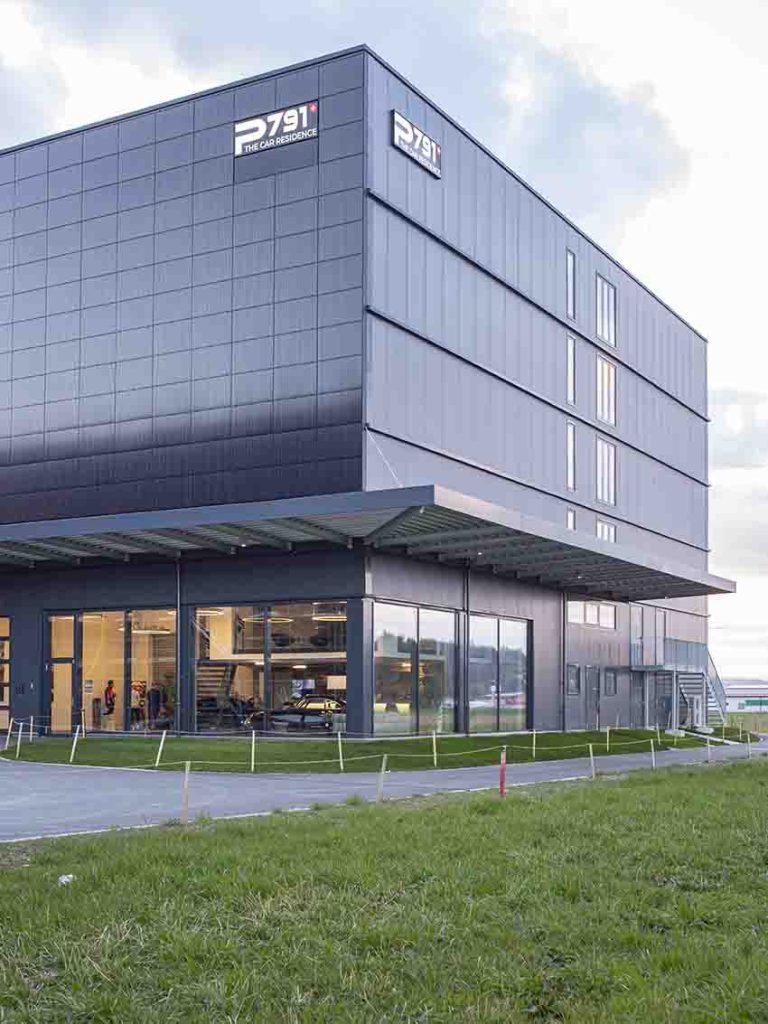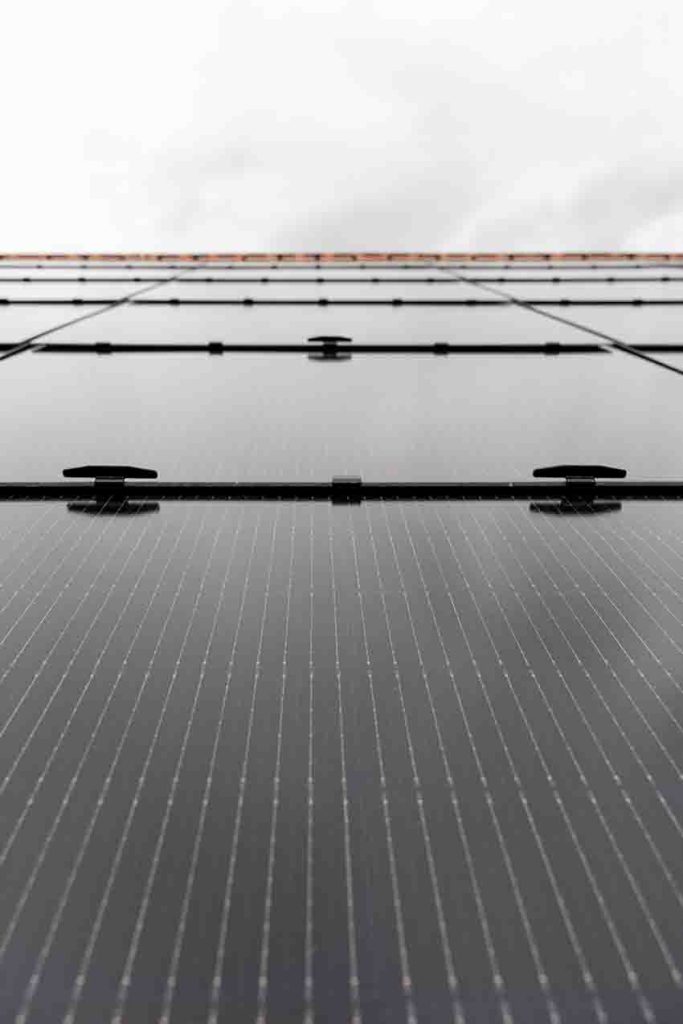For over two decades, 3S Swiss Solar Solutions has been at the forefront of the solar energy revolution. Their journey has been characterized by a relentless pursuit of innovation in photovoltaic technology, especially in the realm of Building-Integrated Photovoltaics (BIPV). The company specializes in seamlessly integrating solar modules into building structures, turning traditional buildings into efficient, sustainable energy sources.
3S Swiss Solar Solutions’ approach combines technology with a commitment to environmental sustainability, reflecting our dedication to reducing the carbon footprint of buildings and advancing towards a cleaner, greener future.
The company is proud that this is not a pure technical engineering approach – for them it is also as important that the finished solutions are optically pleasing and improve the look of the buildings. Everybody can make ugly solar installations, that is easy. Making them look good is a challenge, for which 3S Swiss Solar Solutions has the right solutions.
Interview with Marcus Baeckmann, CTO of 3S Swiss Solar Solutions AG.
Easy Engineering: What are the main areas of activity of the company?
Marcus Baeckmann: We specialize in incorporating solar technology into building structures such as roofs, facades, and balconies. Our approach is not just about generating solar energy but also about enhancing building aesthetics and functionality, all while contributing to sustainable and environmentally friendly energy solutions. Our solar modules are specially designed to meet the requirements of building standards for safety, fire and load requirements, they are developed and manufactured locally in Switzerland to fit the needs of our installation partners.

E.E: What’s the news about new products?
M.B: At 3S Swiss Solar Solutions AG, we are proud to introduce the “TeraSlate” module, a significant step beyond our “MegaSlate” system. This innovative product is more than just a module; it’s a full system that also serves as a roofing solution, complete with our unique sub construction. The TeraSlate modules, acting as solar tiles, offer superior house protection, surpassing standard tiles with a hail class 5 rating, visible in the Swiss Hail Register (Hagelregister VKF), which is also accepted by insurance companies in Germany and Austria.
In addition to providing a roofing solution, the TeraSlate employs half-cells for enhanced efficiency and performance. These cells significantly reduce internal power loss, are less prone to cracking, and handle temperature variations effectively. Their larger size increases the module’s output power and reduces hot-spot risks. Available in various compact sizes and designed to meet European fire safety standards, TeraSlate modules represent a fusion of advanced solar technology with critical safety features, marking a substantial advancement in our product offerings.
I also want to point out that our roof system does not use any aluminum frames, therefore improving its energy and CO2 balance further.

E.E: What are the ranges of products?
M.B: At 3S Swiss Solar Solutions AG, we specialize in a wide range of building-integrated solar solutions, extending beyond roofing to include facades, balconies, and overhead applications, all offered as comprehensive systems. Our roofing solutions are customizable in various colors and techniques, aligning with heritage protection norms like Germany’s ‘Denkmalschutz’ or Switzerland’s ‘Ortsbildschutz’ (Protection of the “image” of village). Facade solutions are available in different colors, providing a more aesthetically pleasing alternative to the typical black solar panels. We are particularly proud of our anti-glare solutions for both roofs and facades, which effectively eliminate disturbing reflections for neighbors, as verified by tests.
E.E: What is the state of the market where you are currently active?
M.B: Our main markets, Switzerland, Germany, and Austria, show promising trends in solar energy adoption. Switzerland recently had a record-breaking year in solar deployment, with significant growth expected to continue. In Germany, the demand for photovoltaic systems is rising sharply, fueled by increasing interest from private homeowners. Austria is also experiencing rapid growth, driven by clean energy initiatives and favorable policies.

Notably, in Germany and soon in Austria, all components of PV systems, including building-integrated systems and their sub construction, are exempt from VAT (19% in Germany, 20% in Austria). This exemption, especially for building-integrated systems, extends to elements like the water shield and wooden roof components, making them highly cost-competitive compared to traditional roof-mounted systems. This favorable fiscal environment further enhances the attractiveness of BIPV solar solutions in these markets, aligning well with our strategic focus on innovative solar technologies.
E.E: What can you tell us about market trends?
M.B: In the solar energy sector, we at 3S observe distinct trends in our primary markets. In Germany and Austria, the concept of building-integrated photovoltaics (BIPV) for roofs and facades is emerging, capturing significant interest due to our extensive experience and over 18,000 installations we have done already. The rising demand for winter power is accelerating the adoption of solar facades, where we offer viable solutions that align with safety standards, unlike using standard PV modules. In the more mature Swiss market, the focus is on reducing total installation costs, utilizing digital tools for efficient design, and addressing the shortage of skilled professionals (“Fachkräftemangel”). Our solar tiles MegaSlate and TeraSlate are increasing the speed of covering a roof compared to tiles. These trends are shaping our business strategies and driving growth in these regions.

E.E: What are the most innovative products marketed?
M.B: A very difficult question to answer. We have so many different details in our products, which make them special: new cell technology, colors, anti-glare surfaces, integrated systems for various situations – a lot of innovation in technical details.
Nevertheless, I belief our innovation is how we look onto integrating solar – all our various objects and products are at the end based on only 20 or 30 root elements. Everything is derived from these building blocks. This generates a huge modular assembly system for BIPV, where the elements can be combined in such a way that it fits all the thousands of existing buildings and the thousands of ideas of architects.
This is the real innovation of 3S – we think BIPV.
E.E: What estimations do you have for the beginning of 2024?
M.B: Despite the downward price trend in standard PV modules, we at 3S Swiss Solar Solutions AG remain optimistic about the growth potential for Building-Integrated Photovoltaics (BIPV) in our key markets. For the beginning of 2024, we anticipate continued growth in Switzerland, where the market is more mature and receptive to the advantages of BIPV solutions. In Germany and Austria, although the trend towards standard PV modules presents competition, we see a huge opportunity for BIPV.

The unique benefits of integrating solar solutions into building architecture, such as aesthetic appeal and space efficiency, are increasingly recognized. Therefore, we expect these markets to gain momentum for BIPV, aligning with a broader trend towards sustainable and integrated building designs, despite the competitive pricing of standard PV modules.
Our new production facility with a very high automation standard in Switzerland, applying a capacity of up to 250MW, starts production in December 2023. This shows that we believe in the market growth and our Swiss manufacturing.

